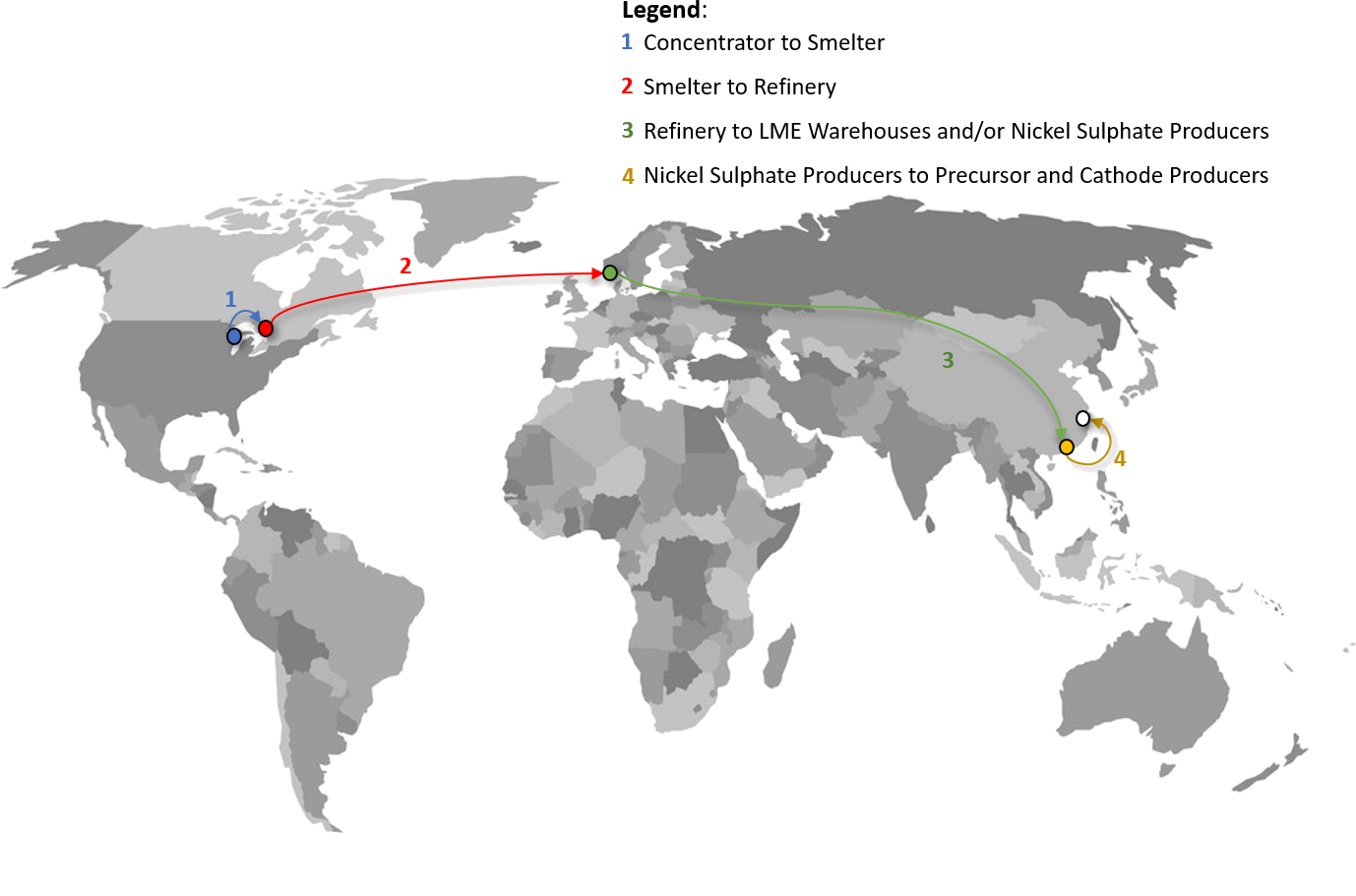Present Transportation of Ni
The same unit of nickel is transported up to 4x, making it a very intensive carbon footprint. Typically, nickel goes from the mine to the smelter, from the smelter to the refinery, from the refinery to the nickel sulphate producer and from the nickel sulphate producer to the battery precursor producer.
The stainless-steel supply chain is very old and entrenched. For the most part, the sunk capital investment needs to be utilized for nickel producers to cover their fixed costs. The production of nickel sulphates and precursor is therefore an extension of an existing supply chain that was developed for a different product, namely nickel for stainless steel, which makes it very inefficient.
This is an opportunity for the Tamarack Project: We have a clean nickel concentrate even compared to many other high-grade nickel sulphide projects. We have therefore leached our concentrates with over 99.5% recoveries into a liquor. The next step is to extract the nickel into a sulphate using a hydromet process, which is very similar to what is used for nickel matte. Once we have produced a nickel sulphate, we will give consideration to potentially producing a precursor product.

